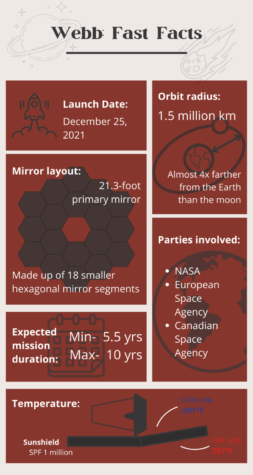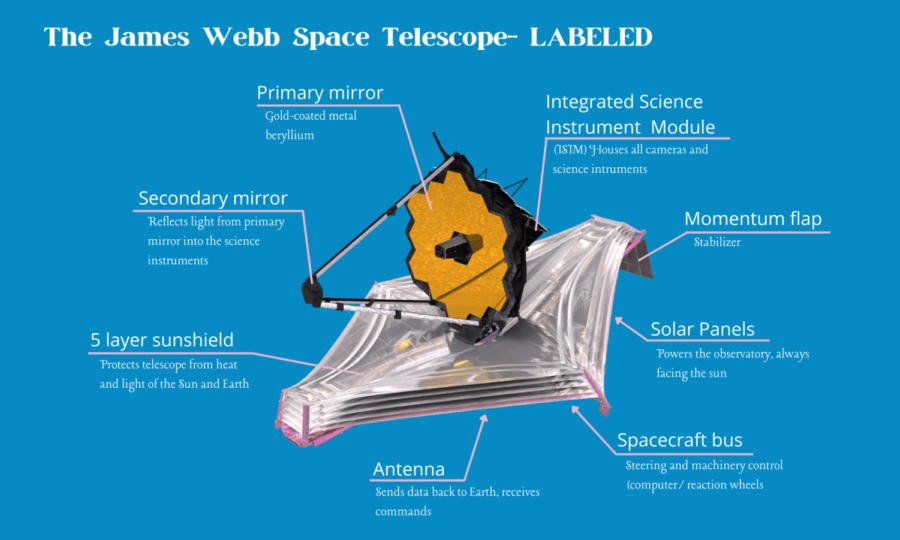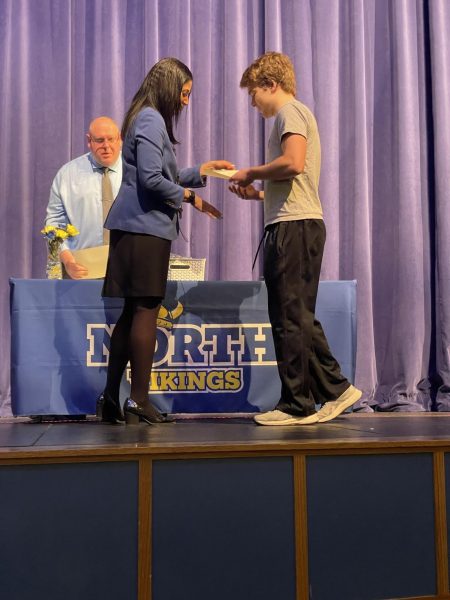The stars are no longer the limit for NASA’s James Webb Space Telescope
October 17, 2022
There’s enough things dividing us that it would be nice to have something uniting us and I think a lot of what we’re going to be finding with exoplanets could have the possibility to do just that.
— Teal
NASA’s James Webb space telescope (JWST) was launched Christmas Day 2021, and its first images were released to the public July 12, 2022. The Webb telescope is “the largest, most complex and powerful space telescope ever built,” according to Northrop Grumman, a scientific design and development company.
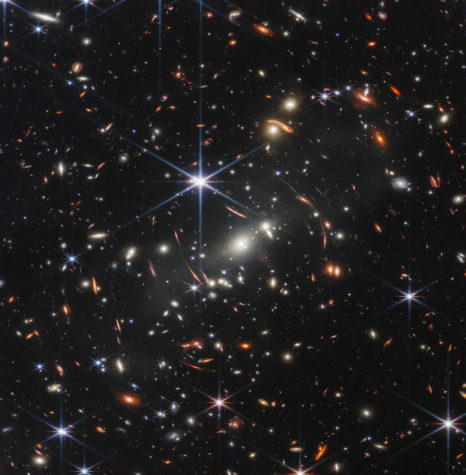
PHOTO BY NASA (NASA, ESA, CSA, STScI, Webb ERO)
The Webb telescope page of NASA’s website lists the mission goals as follows: to search for the origins of the Big Bang, determine how the earliest galaxies formed and evolved, and investigate exoplanets with the potential for life. This project is an extension of the Hubble Space telescope but with better detection capabilities and improved sensitivity, according to NASA.
“One of the really cool things is that while Hubble is still going both of them can look at the same thing, so there’s the two best telescopes looking at the same thing,” said David Teal, North science teacher, who has been following the progress of the telescope since he first heard about it around 2003. Teal’s thesis was on the atmosphere of Mars.
Originally, the JWST was proposed in the mid 1990s as the Next Generation Space Telescope. After further development, JWST got its name from the famous NASA administrator James E. Webb, under whose tenure the first moon landing happened. He worked under President John F. Kennedy and Lyndon B. Johnson from 1961-1968. Launched during his time were the Apollo 11 mission, the Explorer series of astronomical satellites, and the Orbiting Solar Observatory, among over 70 others.
Images of galaxies and other space objects produced by the JWST are more detailed and colorful than previous images taken with NASA telescopes. These images use a technique involving infrared photography which detects different wavelengths of light more often associated with the beginnings of the universe. Thus, this unique telescope has a higher likelihood of uncovering some of the mysteries involving the Big Bang and the formation of galaxies.
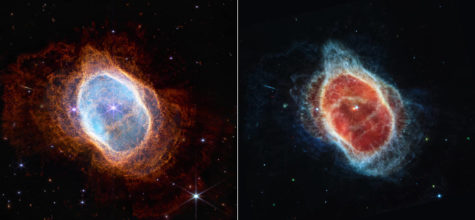
PHOTO BY NASA (NASA, ESA, CSA, STScI, and The E)
One of the unique aspects of JWST is that it is built to be resilient. “One of their mirrors, there’s like 17 mirrors, but it got hit by a micrometeorite and it’s still working better than anything we have by a lot,” said Teal.
However, according to The Scientific Research Honor Society, the downside of JWST is that due to its limited supply of hydrazine fuel needed to maintain the spacecraft’s orbit, the mission will last for around five and a half to ten years. Compared to the Hubble mission, which is expected to last around 40-50 years, this is a short lifetime.
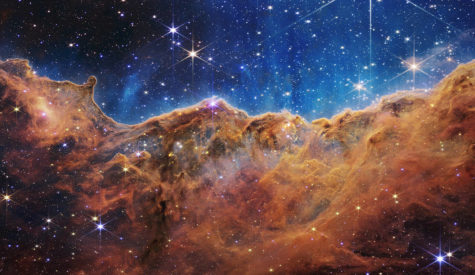
PHOTO BY NASA (NASA, ESA, CSA, STScI, and The E)
Teal and fellow North science teacher, Aaron Musson, both agree that content covered in physical science can help students understand the functions and purpose of the JWST. Teal said that when spectroscopy is covered in physical science, students can gain a basis of knowledge for a lot of what the JWST is doing.
Using real time science stories in science instruction does work, it piques student interest.
— Musson
“When we get into the content for physical science, evidence for the big bang, we take a look at the speed with which galaxies are moving away, and that’s what stretches the wavelength, so that what was once visible light is now infrared,” said Musson. The JWST is the most advanced image-collecting telescope, to date, that uses infrared light to detect celestial bodies.
NASA releases official updates biweekly on their JWST-specific website, webb.nasa.gov/, the JWST as their JWST-specific Twitter account, @NASAWebb. Updates often include pictures taken from Webb’s imaging system or published, peer reviewed information and graphs.
